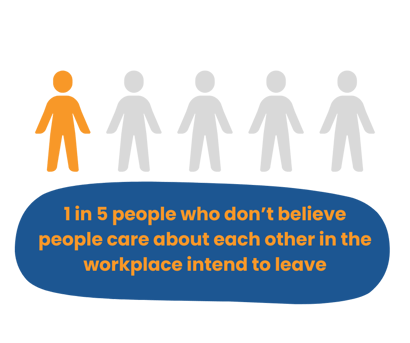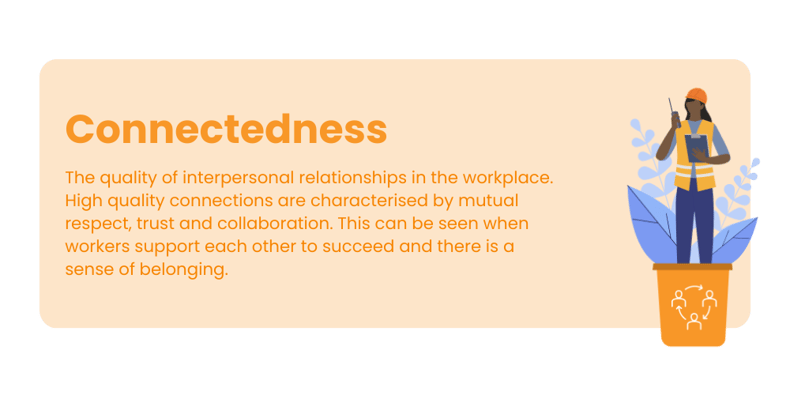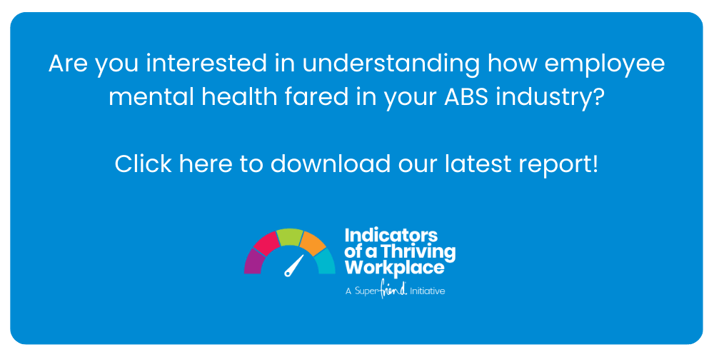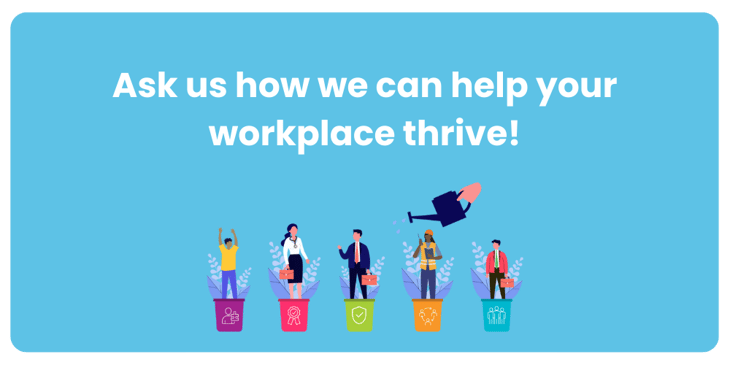Is loneliness our next public health epidemic? Discover its impacts on workplace wellbeing and productivity. Take action and learn about the five ways employees and leaders can combat loneliness at work to create thriving workplaces.
Is loneliness our next public health epidemic?
According to the Australian Psychological Society, loneliness could be becoming one of the largest health epidemics that we face in 2024. All human beings are vulnerable to experiencing loneliness and the adverse impacts it can have on both our physical and mental health.

How is loneliness impacting employees?
In the 2023 Indicators of a Thriving Workplace report, we found that when people feel isolated at work, they are more likely to leave and there is lower employee retention. 1 in 5 people who don't believe people care about each other in the workplace intend to leave their organisation in the next 12 months.
Absenteeism or sickness absence is defined in our research as any time an employee does not attend work at scheduled times due to the experience of psychological distress. Loneliness Australia's State of the Nation Report found that 11% of people who feel lonely are more absent from work. Direct Health Solutions found that absence levels have increased by 23% between 2019 and 2022 with the average days off per employee per annum now at 13.8 days. Absenteeism cost Australian businesses $24.2 billion in lost productivity in 2022 according to CFO magazine.
Our 2023 Indicators of a Thriving Workplace survey data showed that of the employees who took leave due to psychological distress in the past 4 weeks, only 68% feel like they are part of a team highlighting the importance of connection at work.

How loneliness impacts productivity:
-
Reduced Engagement: feeling lonely can lead to disengagement from work activities and a lack of enthusiasm in tasks. This disconnection can result in decreased productivity as employees might find it harder to focus or be motivated.
-
Difficulty in Collaboration: collaboration often relies on strong interpersonal connections. When individuals feel isolated, they might struggle to collaborate effectively, hindering teamwork and the sharing of ideas.
-
Lower Creativity and Innovation: loneliness can limit creativity and innovation. Collaborative environments often stimulate new ideas, but when someone feels lonely, they may lack the diverse perspectives and brainstorming opportunities that foster innovation.
-
Distraction and Procrastination: loneliness can lead to increased distraction and procrastination. Without social interactions to break up the monotony of work, individuals might seek distractions, affecting their ability to concentrate on tasks.
Five ways to combat loneliness:
- Expand Social Connections: Actively seek opportunities to meet new people or reconnect with old friends. This could involve joining clubs, attending social events, or participating in community activities aligned with your interests.
- Cultivate Meaningful Relationships: Focus on building deeper connections with a few individuals rather than many superficial ones. Invest time and effort in nurturing relationships that bring meaning and support to your life.
- Utilise Technology Positively: While technology can sometimes contribute to feelings of isolation, it can also be a powerful tool for connecting with others. Use it to stay in touch with friends or family, join online communities, or participate in virtual events and discussions.
- Engage in Hobbies or Activities: Pursue hobbies or activities that interest you. Join classes, clubs, or groups related to these interests. Shared activities provide a natural platform for meeting like-minded individuals and forging connections.
- Volunteer or Help Others: Engaging in volunteer work or helping others can create a sense of belonging and purpose. It also offers opportunities to connect with people who share your values and interests.
How can leaders address employee loneliness?
-
Encourage Open Communication: Create an environment where employees feel comfortable discussing their feelings. Encourage open conversations about mental health and emotions without stigma.
-
Look for Behavioural Signs: Loneliness might manifest as changes in behaviour. Watch for signs like increased social withdrawal, reduced participation in team activities, decreased productivity, or changes in mood. Even in connected teams, employees can feel isolated and be negatevly impacted.
-
Promote Social Connections: Encourage team-building activities, both within and outside of work hours. This can include team lunches, social events, or volunteering opportunities that foster connections among colleagues.
-
Promote Inclusivity: Foster an inclusive culture where everyone feels valued and included. Encourage collaboration and create opportunities for cross-departmental interactions to prevent feelings of isolation.
Connectedness in the workplace
Connection is one of Superfriend's 5 Domains used to measure how thriving workplace mental health is across Australia. In our 9th annual Indicators of a Thriving Workplace Survey we found compelling data that highlights how we can improve wellbeing through improved connection.

The benefits of connection at work:
From our study, we found that people who feel that they are part of a team report a more mentally healthy workplace overall. 90% of employees with a mental health condition said that the workplace actually benefited their mental health, indicating that workplaces are in a position where they can improve mental health.
If you're interested in gaining an understanding of how mental health fared in your ABS industry, download our 2023 key insights report. For more industry specific snapshots and deepdives submit your interest today.

.png)






.png)
